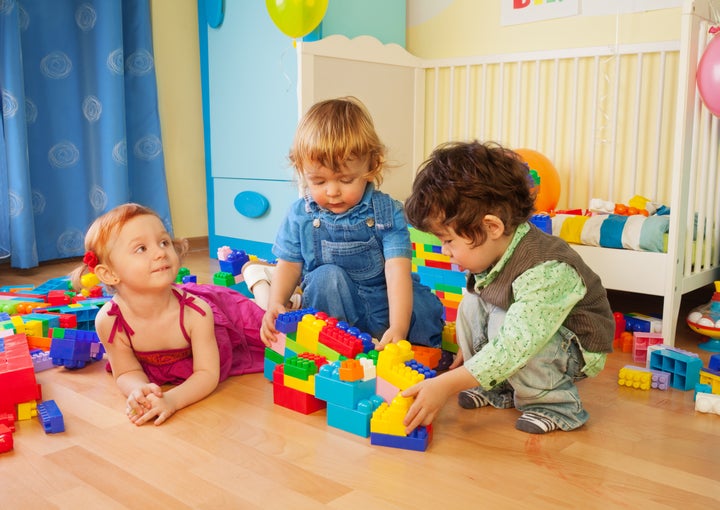
In today's society, parents and educators are increasingly realizing the benefits of playing with all kinds of toys. That is, a preschool-aged boy who happily investigates a toy kitchen is less likely to be chastised by his teacher or parents than in decades past. Likewise, a preschool-aged girl who plays intently with a toy truck is less likely to be scolded or redirected to playing with a doll. Of course, some parents still feel uncomfortable with their children's gender nonconformity -- particularly their sons'. A boy snuggling with a doll is not universally accepted as a sign of healthy development, and may create anxiety for some parents.
Yet, still, gender norms and roles for boys and girls, and for men and women, have become increasingly less rigid. Related to this, there is an increasing understanding that restricting the types of toys that children play with may limit their ability to develop skills and interests, and also to develop into well-rounded human beings.
In a recent investigation of preschool-aged children of first-time adoptive parents (44 lesbian- parent families, 34 gay-parent families, and 48 heterosexual-parent families), my colleagues and I found that the children of same-gender parents were less gender stereotyped (more flexible) in their play behavior than the children of heterosexual parents. So, the play behavior of boys and girls raised by lesbian parents and gay male parents was less gender-typed than the play behavior of boys and girls raised by heterosexual parents: they played with a more even "mix" or balance of "feminine-typed" toys and activities (dolls, dress up) and "masculine-typed" toys and activities (trucks, sports). Further, I found that the sons of lesbian mothers engaged in slightly less stereotypically masculine play behavior (e.g., trucks, sports, guns) than sons of gay fathers and heterosexual parents.
What does this mean, and why does it matter? First, it suggests that same-sex parents may facilitate their children's exploration of a wider range of toys and activities, by creating an environment where their sons and daughters have greater access to, and are unlikely to be chastised for playing with, toys that are stereotypically "girl toys" and "boy toys" respectively. Heterosexual parents, in contrast, may tend to create an environment that is somewhat more discouraging of gender-atypical behavior and interests, possibly because such behavior -- particularly among boys -- is sometimes seen as a precursor or indication of homosexuality. Such concerns, though, may keep them from embracing their children's full range of interests, or supporting their children in developing a wide range of skills and abilities.
Our finding that boys of lesbian mothers engaged in somewhat less masculine play behavior may reflect not only boys' more liberal social environment, but also the influence of having two mothers/no father, such that boys in two-mother households -- like boys in single-mother households -- may develop somewhat different play styles than boys with fathers.
The take home point? Past research has shown that strict adherence to traditionally gender-stereotyped toys may curtail the development of certain skills and strengths. Stereotypically-feminine toys foster nurturance and role-playing, whereas stereotypically-masculine toys promote greater mobility and manipulative play. Thus, children who play with a variety of toys and activities may have a wider repertoire of skills and abilities.
As the holidays approach us, and we search for the perfect gift for our niece, nephew, son, or daughter, perhaps it would benefit us to think beyond the gender box. What kinds of activities does the child in question enjoy? What types of skills can we encourage him or her to develop? What types of toys and activities are missing from their toychest or playroom? Can we challenge our children -- and ourselves -- to think less in terms of pink and blue, girl toys and boy toys, and more in terms of the kinds of skills and strengths we wish to facilitate in our children? Doing so might mean the difference between teaching our children to use just a few of the colors in the Crayola box, and painting a full-on rainbow.
The study, entitled "Gender-Typed Play Behavior in Early Childhood: Adopted Children with Lesbian, Gay, and Heterosexual Parents" was conducted by Abbie E. Goldberg, Associate Professor of Psychology at Clark University, Deborah A. Kashy, Professor of Social Psychology at Michigan State University and JuliAnna Z. Smith, Methodology Consultant at the University of Massachusetts, Amherst and appears in the current issue of Sex Roles: A Journal of Research.